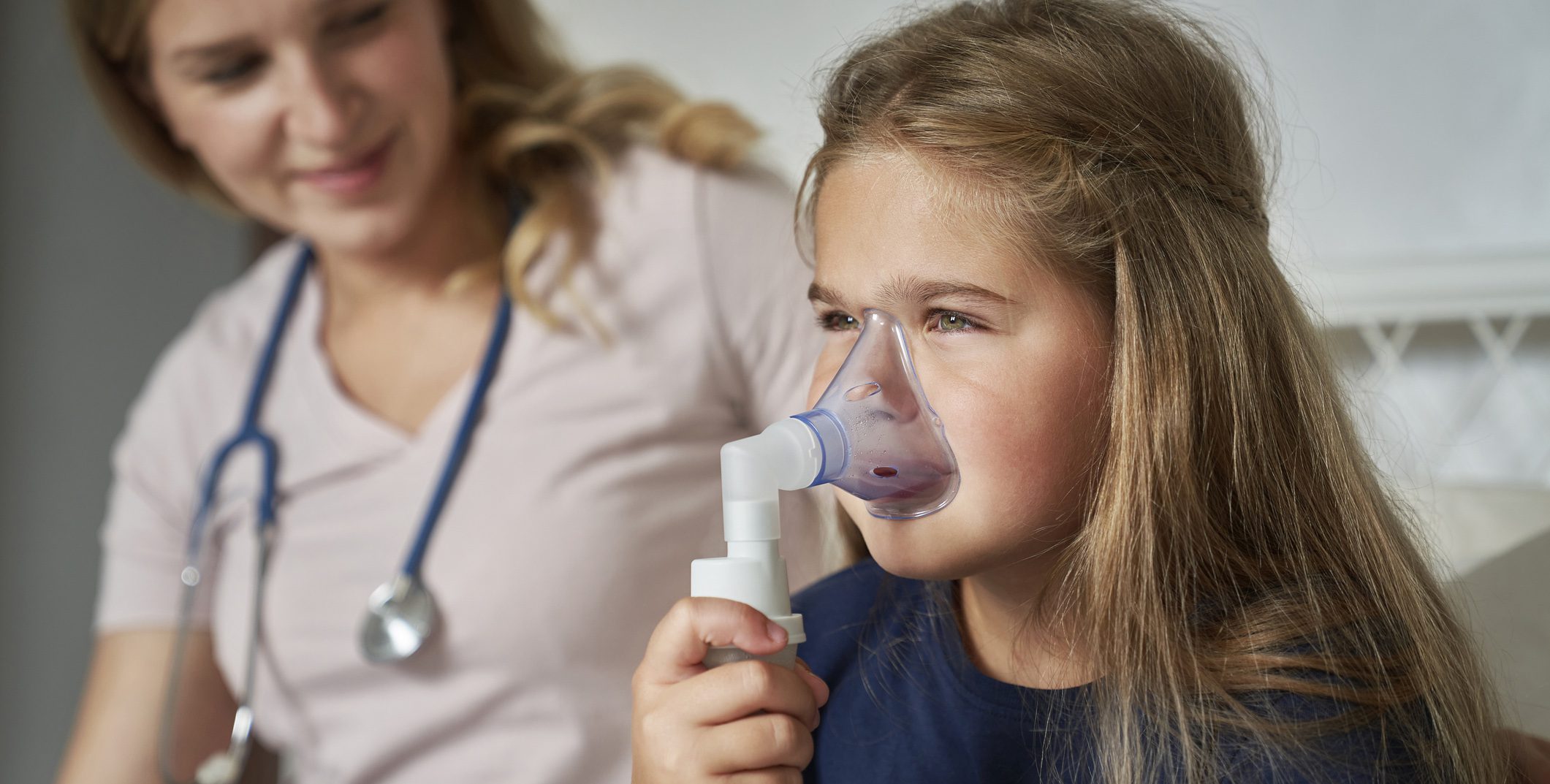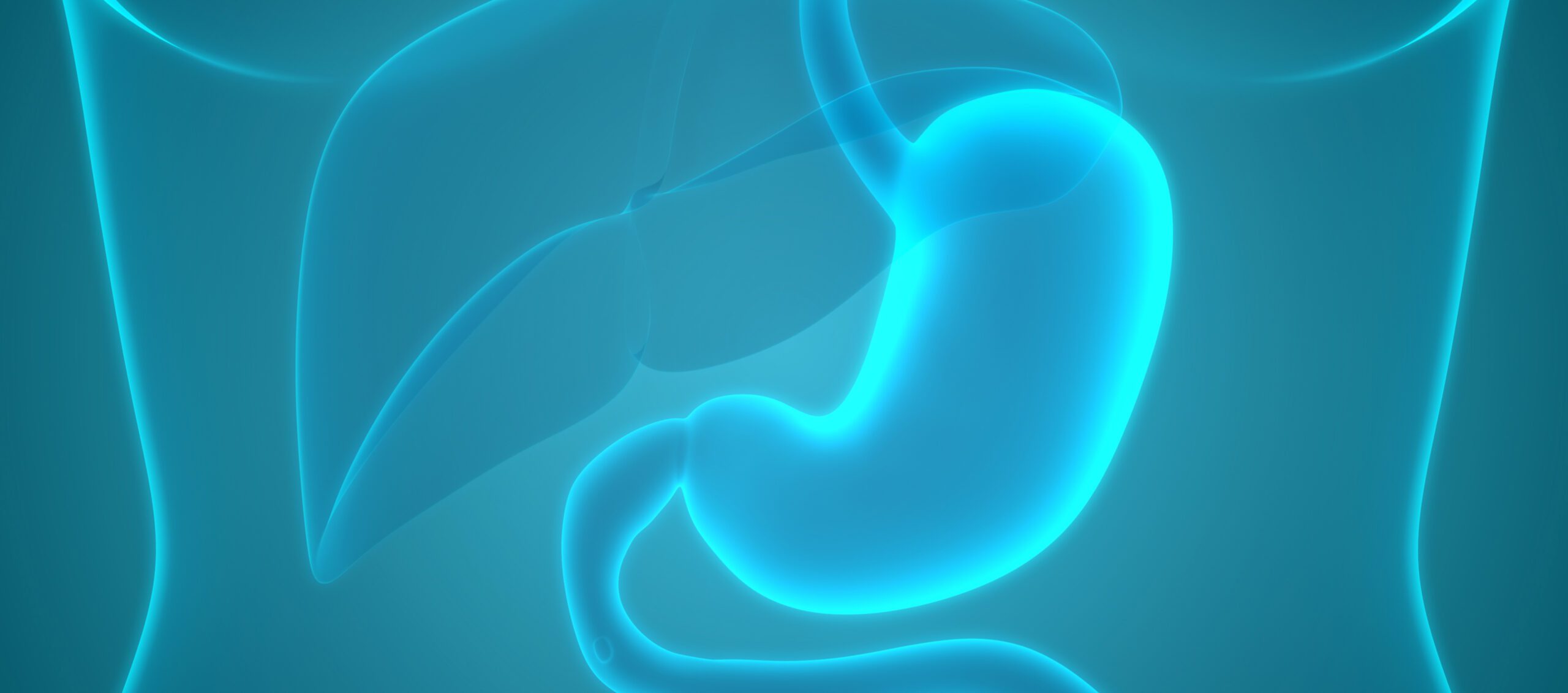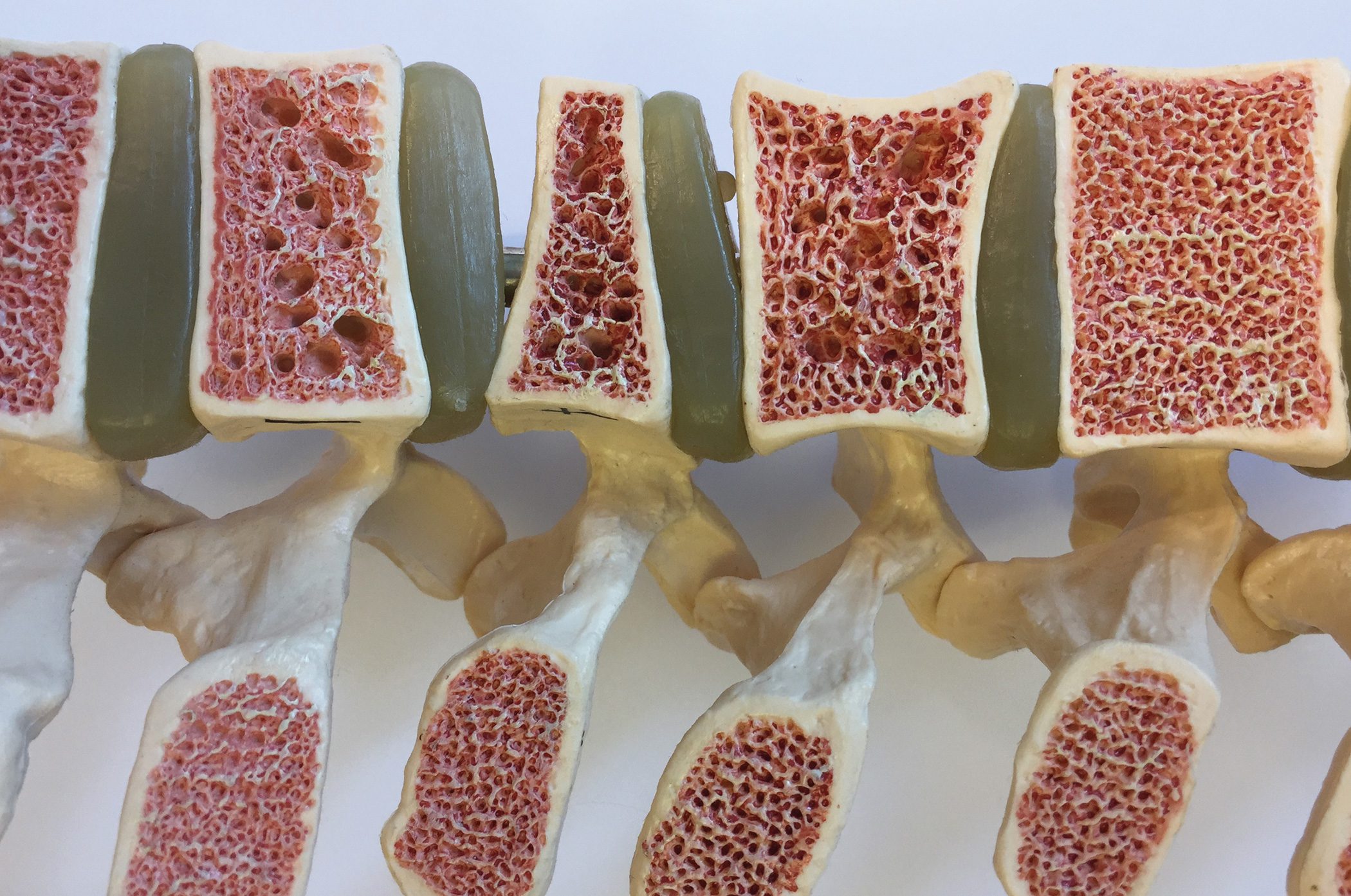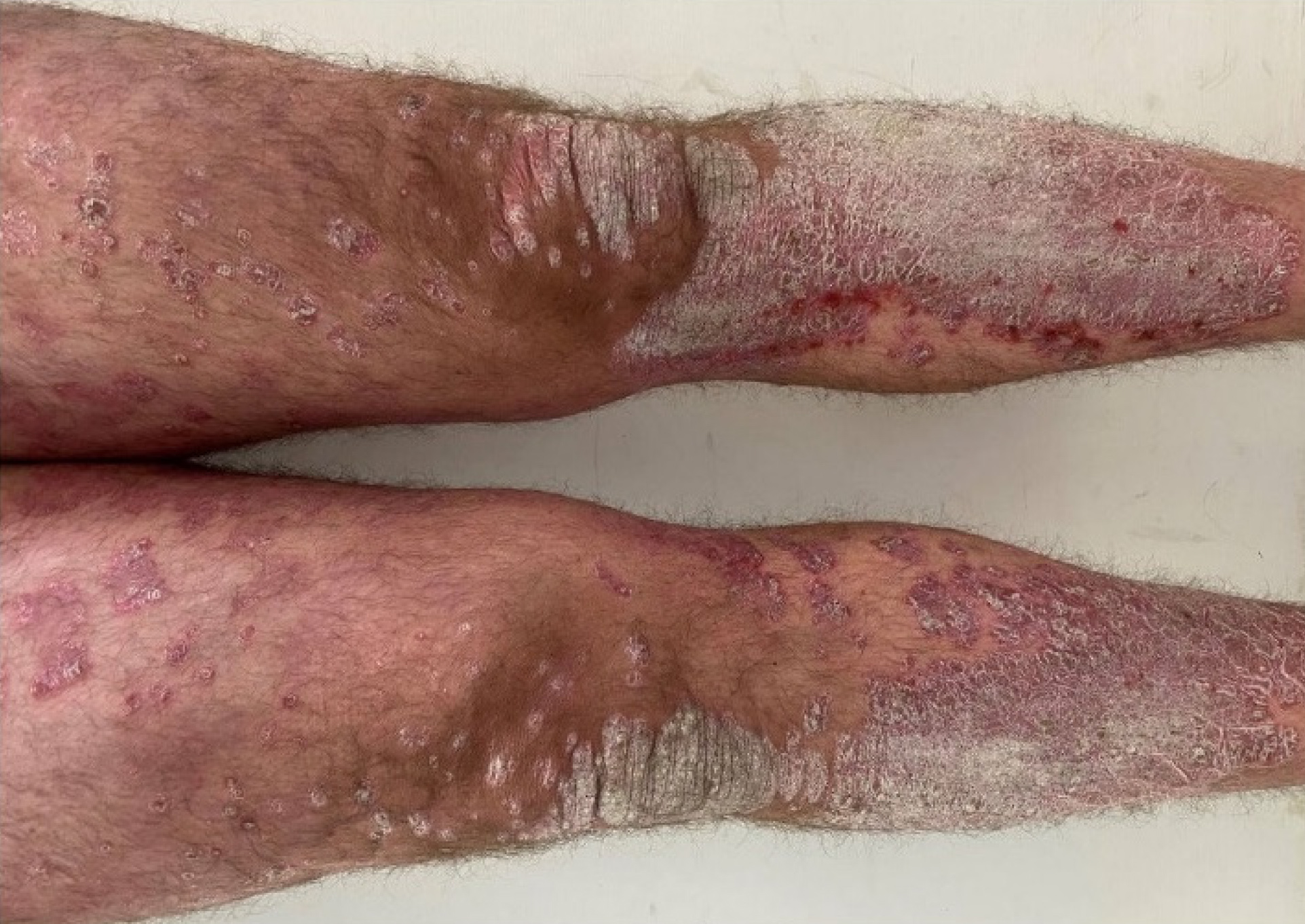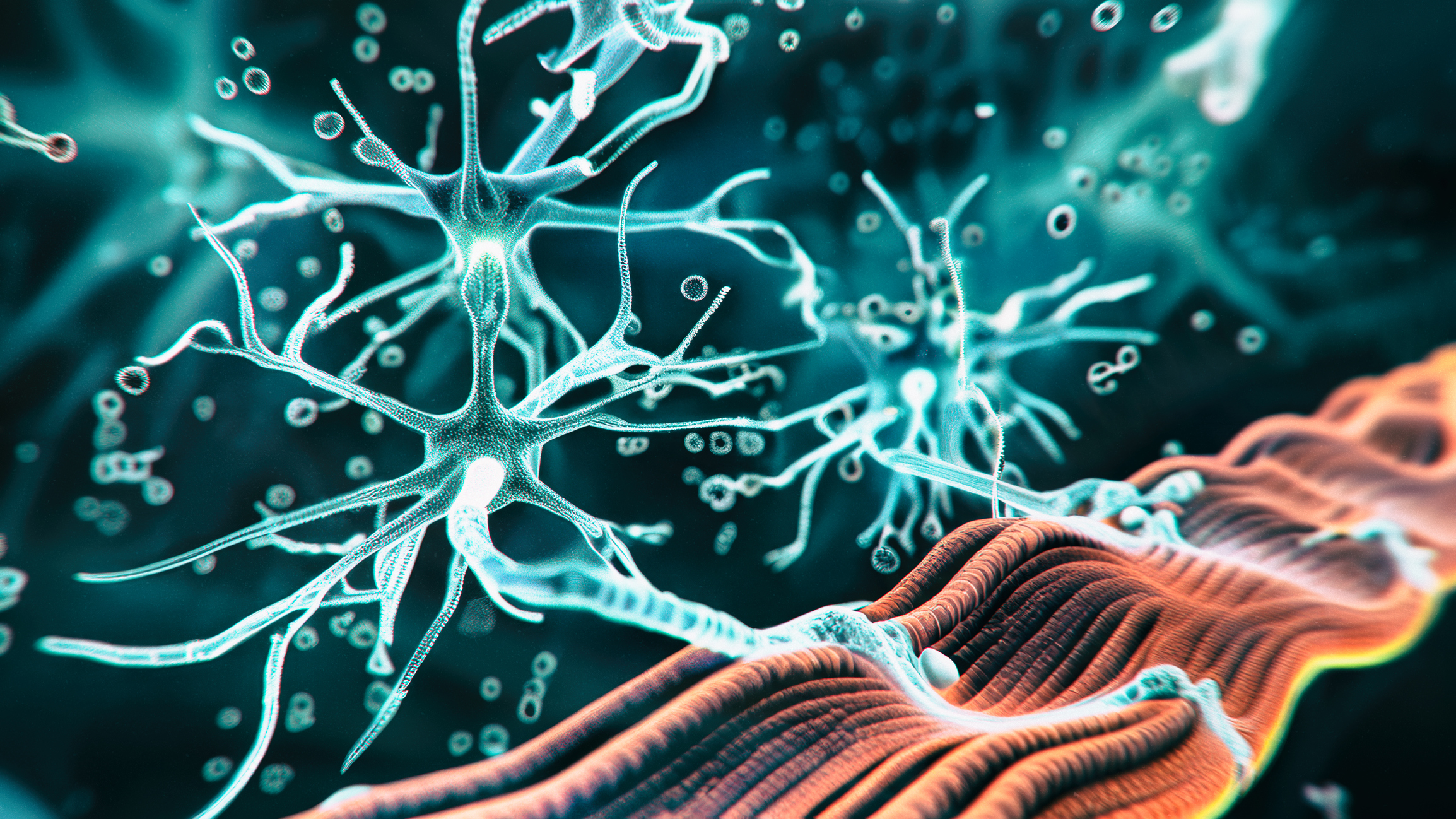Migraine is one of the most common neurological disorders with a global prevalence estimated at 14-15%. The highest prevalence is between the ages of 35 and 39, and women are more frequently affected than men. The diagnosis of migraine is primarily based on clinical criteria and the patient’s medical history. To date, there are no disease-specific biomarkers, which is why the exclusion of a secondary cause of headache is crucial for the diagnosis and is included in the main criteria.
Migraine is one of the most common neurological disorders with a global prevalence estimated at 14-15% [1]. The highest prevalence is between the ages of 35 and 39, and women are more frequently affected than men [2].
The diagnosis of migraine is primarily based on clinical criteria and the patient’s medical history. To date, there are no disease-specific biomarkers, which is why the exclusion of a secondary cause of headache is crucial for the diagnosis and is included in the main criteria [3].
Five attacks are required for the diagnosis of migraine without aura, two attacks for migraine with aura, as well as the required characteristics defined by the International Headache Society (ICHD-3 criteria) (Table 1). A distinction is also made between episodic migraine with and without aura and chronic migraine with and without aura. It should be noted that these criteria were developed for scientific research, among other things. This means that particular emphasis is placed on a high level of specificity in the criteria. In contrast, it is crucial for everyday clinical practice not to overlook any diagnosis. For situations in which one of the required criteria regarding duration, pain character and accompanying symptoms is not met, a diagnosis of probable migraine can be made unless they fulfill the criteria of another headache disorder (Table 1).
Headache red flags, known by the acronyms SNOOP4 [4] (Table 2) and SNOOP10 [5], are used as clinical aids to better differentiate secondary causes of headache. The SNOOP10 list of red and orange flags is an extension of the SNOOP4 list, which has added further symptoms that may indicate a secondary cause of headache (pregnancy and lactation, eye pain with autonomic symptoms, onset of headache after trauma, painkiller overuse or onset after starting a new medication). If a secondary headache disorder is suspected, further laboratory tests and cranial imaging (preferably an MRI scan) should be evaluated.
Referral to a neurology specialist should be made if there is uncertainty regarding the diagnosis, if treatment is difficult or if there are relevant comorbidities that restrict the choice of therapies.
Therapy
Decisive factors in the treatment of migraine are, in addition to the actual choice of medication(s) and information about their side effects, consideration of the patient’s preferences and wishes, setting realistic goals, recognizing trigger factors (e.g. fasting, menstruation) and information about the risk of medication overuse headaches.
A realistic therapeutic goal is not to cure the migraine, but primarily to reduce the frequency, severity and duration of migraine attacks and the associated restrictions, so that the patient’s ability to function in everyday or professional life can be restored.
Migraine therapy can be divided into three groups:
- Acute drug therapy
- Drug prophylaxis
- non-drug therapy
Acute drug therapy
The aim of acute drug therapy is to achieve rapid and lasting relief from pain. In drug trials for the acute treatment of migraine, the proportion of patients who are pain-free 2 hours after taking the medication is often assessed [6]. Acute therapy should be taken early in the headache phase, when the headache is still mild [7].
Recurrent headaches are when, after initial relief or freedom from pain, a moderate to severe headache recurs within 24 hours [8]. In such cases, a long-acting medication is preferable.
Most patients have already had experience with the classic NSAIDs and analgesics [7]. These include preparations such as diclofenac, ibuprofen and acetylsalicylic acid, metamizole or naproxen (Tab. 3, Therapy recommendation of the Swiss Headache Society 2021). There are also fixed combination preparations with ASA, paracetamol and caffeine that have shown efficacy in studies [9] (only combination preparations of paracetamol and caffeine are available in Switzerland). It should be noted that these medications must be taken early and in high doses so that the attack can be interrupted. Paracetamol alone is less effective against migraine than NSAIDs and is recommended if NSAIDs are not tolerated or if there are contraindications [7,9]. Opioids are not recommended in the acute treatment of migraine, as they have limited efficacy and side effects such as nausea and vomiting, are potentially addictive and can lead to overuse of medication more quickly [9].
The use of metoclopramide and domperidone is recommended for the accompanying migraine symptoms, nausea and vomiting (Table 3) . Ergotamines are no longer available in Switzerland and no longer have any value in the acute treatment of migraine due to their unfavorable side effect profile (nausea, vomiting, cardiovascular side effects).
Triptans
Triptans are the drug of choice for moderate to severe migraine headaches that do not respond adequately to NSAIDs or analgesics. It should be noted, however, that patients themselves typically determine quickly whether their attacks respond to NSAIDs or analgesics. Of course, triptans can also be used without first trying an NSAID. It is also important to aim for early use in an adequate dosage, if necessary also in combination with an antiemetic or an NSAID. There are now seven different triptans (Tab. 4, Therapy recommendation of the Swiss Headache Society 2021).
In addition to tablets, certain triptans are also available as nasal sprays or subcutaneous injections. However, patients prefer to take tablets [3]. There are differences between the individual preparations in terms of price, onset of action and duration of action (Table 4), which should be taken into account when prescribing. Most oral triptan preparations take effect after 20-60 minutes [10]. Sumatriptan subcutaneous has the fastest onset of action after ten minutes [11], but frovatriptan and naratriptan have a slower onset of action (up to four hours) [12], but at the same time a longer duration of action, which is why they are often used for recurrent headaches, also in combination with a fast-acting NSAID [9].
The subcutaneous injection has the fastest onset of action (approx. ten minutes) and is also the most effective [10]. The use of an injection can be considered in patients whose migraine headaches quickly reach the peak of pain or who wake up in the morning with an advanced migraine and/or who are suffering from severe accompanying symptoms.
ptomena (nausea/emesis). Alternatively, the nasal spray can also be used, which has a slightly later onset of action than the syringe [13]. Eletriptan and rizatriptan have the fastest onset of action among the tablets (approx. 30 minutes) [9]. The triptan should be taken early in the headache phase, but not during the aura, as no efficacy has been demonstrated there, not even against the aura [3].
If the effect is insufficient/absent, a second dose can be taken after 2-4 hours (depending on the preparation). If the headache does not improve, the next migraine attack can be combined with an NSAID. If a triptan does not work, it is recommended to switch to another triptan after three unsuccessful attempts. Alternatively, you can also switch to subcutaneous or nasal application. Interestingly, around 30% of patients do not respond to triptans [14]. Patients should be informed not to combine different triptans during the same migraine attack. In addition, the use of triptans should be limited to less than ten days/month to prevent the risk of a medication overuse headache.
Side effects, contraindications and precautions
Common side effects of triptans are a feeling of tightness in the neck and chest region, drowsiness, paraesthesia, dizziness, tiredness and flushing [3,9,15]. Almotriptan and naratriptan were associated with the fewest side effects in meta-analyses [16]. Patients with coronary heart disease, angina pectoris, uncontrolled hypertension, peripheral arterial occlusive disease, after a heart attack, a transient ischemic attack or a cerebral infarction should not use triptans [9].
Triptans should not be used for hemiplegic migraine and migraine with brain stem aura. The underlying hypothesis is that the neurological symptoms in these two forms of migraine are associated with cerebral vasoconstriction, which could be enhanced by the administration of triptans, increasing the risk of migraine infarction [17]. However, retrospective studies have not yet been able to confirm this theory [18].
According to expert opinion, the risk of serotonin syndrome with triptans in combination with a serotonin reuptake inhibitor (SSRI) or serotonin-norepinephrine reuptake inhibitor (SNRI) is low [9].
New drugs
Ditane and Gepante are the new generation of drugs for the acute treatment of migraine. Lasmiditan is a selective agonist at the serotonin 5-HT1F receptor and, unlike the triptans, has no vasoconstrictive effect, which is why it could be used in patients with cardiovascular risk factors [19–22]. The Gepante, so-called small molecules, which include Atogepant, Ubrogepant and Rimegepant [23,24], are second-generation CGRP receptor antagonists. Of these, Rimegepant was recently approved in Switzerland, although the reimbursement situation and its significance in the therapeutic landscape remain to be seen.
Status migraenosus
According to the ICHD-3 criteria, status migraenosus is a migraine attack that lasts longer than 72 hours and leads to severe impairment. In most cases, patients have not been able to achieve any relevant improvement in symptoms with acute oral therapy. According to expert consensus, corticosteroids are recommended for the treatment of status migraenosus [25], e.g. 100 mg Spiricort p.o. for three days.
Drug prophylaxis
The aim of drug prophylaxis is to reduce the frequency, duration and severity of migraine attacks [9]. In addition, drug prophylaxis can improve the response to acute therapy [26].
The indication for drug prophylaxis is based on the frequency of attacks, the reduction in quality of life and the risk of overuse of medication (Fig. 1) [9]. There are also other non-evidence-based criteria (Overview 1) . Before starting drug prophylaxis, patients should be informed about the aim and duration of such therapy, the possible options and their side effects. It is also important to show the time horizon, as most drug prophylaxis usually does not work immediately due to the necessary dosing phase, but only a few weeks to months later [7]. Comorbidities should also be recorded in advance (e.g. arterial hypertension, depressive disorder), which could play a role in the choice of medication.
Drug prophylaxis is typically considered effective if a 50% reduction in the number of migraine days [9,26], a relevant reduction in the duration and severity of attacks or an improved response to acute drug therapy [4] has been achieved. Special guidelines apply for the assessment of the efficacy of CGRP antibodies against the background of the extension of a cost approval. Ultimately, however, patients’ personal impressions should also be asked, as they are best placed to assess the benefits themselves.
To reduce the occurrence of side effects, it is recommended to start with the lowest possible dose of the medication and to increase it every 1-2 weeks until the target dose or the tolerated minimum dose is reached [4]. Efficacy is assessed after a treatment period of two months at the target dose or tolerated dose. For CGRP (receptor) antibodies, efficacy should be evaluated after 3 and 6 months, for treatment with botulinum toxin A after 6-9 months, i.e. after three treatment sessions [7].
The response to therapy should at least be documented with a headache diary, in which patients also record the intensity of the headache and the intake of acute medication. In the case of traditional oral prophylaxis, a treatment break can be evaluated after a successful treatment period of 6-12 months (treatment recommendation of the Swiss Headache Society 2021, [7]).
Table 5 shows the drugs for which there is a high level of scientific evidence [9]. In addition, there are other drugs that are used as prophylaxis, which have a lower level of evidence [9]:
- Serotonin-noradrenaline reuptake inhibitor (SNRI): venlafaxine (75-150 mg/day), duloxetine (30-60 mg/day)
- Blood pressure medication: Lisinopril (20 mg/day) [27], Candesartan (8-16 mg/day) [28]
- Magnesium (20-25 mmol/day) [9]
For the beta-blockers propanolol and metoprolol, the calcium antagonist flunarizine and the seizure-suppressing drugs topiramate and valproic acid (off label and pregnancy prevention program) as well as the tricyclic antidepressant amitriptyline, the efficacy is well documented in controlled studies or there is good scientific evidence [9]. They are considered first-line therapy in the drug prophylaxis of migraine. Botulinum toxin A was recently approved for chronic migraine [29,30]; the question of reimbursement is still open.
Traditional oral prophylactics have not been developed specifically for migraine and it is not uncommon to experience limiting side effects, sometimes even before the target dose is reached. The choice of preparation depends on the efficacy, the patient’s preference, the side effect profile and the comorbidities [26]. In a patient with depressive mood and difficulty falling asleep, for example, amitriptyline should be considered as prophylaxis, as the side effect of tiredness could be used as a positive side effect against the difficulty falling asleep. In an overweight patient, on the other hand, topiramate should be discussed as a prophylaxis, which can cause weight loss as a potential side effect. Valproate is teratogenic, which is why it should not be used in women of childbearing age.
CGRP (receptor) antibodies
For some years now, monoclonal antibodies against the CGRP receptor or against CGRP have been available as a second-line therapy, the efficacy of which in the prophylaxis of migraine has been demonstrated in several studies [31–38] (Table 6). In Switzerland, the prescription of monoclonal antibodies is subject to a limitation:
- The drug can only be prescribed by a neurological specialist.
- Presence of chronic migraine (>15 headache days, including at least eight migraine days, during the last three months) or high-frequency episodic migraine (at least eight migraine days within the last three months).
- Unsuccessful therapy with at least two prophylactic first-line therapies during three months or occurrence of relevant side effects under at least two prophylactic first-line therapies or presence of contraindications for all first-line therapies.
After one year of therapy, a therapy break is required. If the patient has a relapse during this period within the next six months (eight migraine days within 30 days), a new application for a 1-year therapy can be submitted.
Side effects and precautions
CGRP antibodies are generally well tolerated. Common side effects are local pain, itching and inflammation in the area of the injection sites as well as constipation.
Contraindications are hypersensitivity to the substance or other ingredients [9]. CGRP (receptor) antibodies must not be used during pregnancy [9]. Furthermore, caution is advised in patients with comorbid Raynaud’s syndrome and arterial hypertension. The approval studies have mostly excluded patients over the age of 65 from participating in the study, so that safety in this group has not yet been proven and real-world studies must be awaited.
Non-drug therapy
Non-drug therapy includes measures that can be taken during the attack and also as prophylaxis. Patients who are reluctant to undergo drug therapy can start with non-drug measures. At the same time, these measures are also recommended in addition to and in parallel with drug therapy for migraines.
It can often help if you identify potential trigger factors and try to avoid or treat them. For example, we recommend behavioral measures such as eating regular meals (avoiding fasting), treating possible sleep disorders, regular physical activity (especially endurance sports) [39] and learning strategies to better manage or reduce stress.
Relaxation methods such as Jacobson’s progressive muscle relaxation, in which specific muscle groups are tensed and relaxed, are based on the fundamental assumption that migraine patients have increased autonomic activation, which can be reduced by systematic relaxation exercises [40].
Biofeedback methods are therapeutic interventions that use technology to record physiological or autonomic functions that are otherwise not consciously perceived and then provide visual and/or acoustic feedback and influence them in the desired direction in training sessions [41]. This can lead to better regulation of tension and relaxation.
Both methods, as well as cognitive behavioral therapy, are recommended by the Swiss and German headache societies for the prevention of migraines. Meta-analyses have proven the effectiveness of these procedures. The effectiveness is comparable [42].
Non-invasive neurostimulation of the trigeminal nerve and vagus nerve are also among the non-drug treatment options for migraine. External trigeminal nerve stimulation of the supraorbital nerve and trochlear nerve (supraorbital transcutaneous neurostimulation) using a small device (Cefaly) has shown efficacy in the acute treatment and prophylaxis of migraine [43,44]. According to the manufacturer, the device can be tested for one month after purchase and can be returned if it has no effect.
The Gamma Core device stimulates the vagus nerve in the neck area (non-invasive transcutaneous vagus nerve stimulation). The randomized placebo-controlled studies conducted for this purpose were unable to show any significant difference in the reduction of monthly migraine days [45,46], which is why we only use it in individual cases in practice.
There are reviews of acupuncture [47] that assess its use as an effective option for both acute therapy and prophylaxis. However, the quality of the individual studies is inadequate, so that no clear recommendation can be made [9] Figure 1 again shows the procedure with regard to drug prophylaxis for migraine.
Treatment of menstrual migraine
Short-term prophylaxis can be used for menstrual migraine with/without aura. Menstrual migraine is defined according to ICHD-3 criteria as: Migraine attacks with/without aura that begin on days 1 ± 2 (i.e. day -2 to +3) of menstruation in at least two of three menstrual cycles and at no other time of the cycle. Short-term prophylaxis by taking naproxen 2× 500 mg and/or a long-acting triptan (frovatriptan or naratriptan) two days before the onset of menstruation for a total of five days can be used [9].
Treatment of migraine during pregnancy
During pregnancy, especially in the 2. and 3rd trimester, the number of migraine attacks decreases for most women [48,49]. After giving birth, more than half of mothers experience an increase in migraine attacks again, which can also be partly attributed to additional trigger factors such as lack of sleep and stress [48].
Many medications that would be used to treat migraines must not be taken during pregnancy. This is due to the fact that pregnant women are generally excluded from randomized controlled approval studies. In addition, some medications have even been shown to increase the risk of fetal developmental disorders and/or malformations or premature abortions [50]. Most data on the safety of drug therapy during pregnancy and breastfeeding come from observational studies with all their strengths and weaknesses.
Migraine attacks during pregnancy should, if possible, be treated primarily with non-medicinal measures such as shielding from stimuli, rest and relaxation exercises. However, the use of medication may be necessary for severe migraine attacks. The drugs approved for this purpose should be used for as short a time as possible in order to minimize potential risks [50].
Paracetamol is generally the analgesic of choice during pregnancy. However, recent data suggest that intrauterine exposure to paracetamol may alter fetal development and increase the risk of neurodevelopmental, reproductive and urogenital disorders [51]. The use of paracetamol should therefore be limited to as short a period as possible.
In contrast to the German headache guidelines, we in Switzerland are more cautious with the use of NSAIDs and triptans during pregnancy (therapy recommendations of the Swiss Headache Society 2021) and recommend the use of paracetamol as the drug of choice with the above reservation. NSAIDs such as ibuprofen and acetylsalicylic acid should not be taken, especially in the third trimester, due to the risk of miscarriage and premature closure of the ductus arteriosus botalli [50]. For triptans, there is no evidence in several cohort and registry studies that they lead to fetal malformations or pregnancy complications [9,50]. The most data are available for sumatriptan, which is why the use of sumatriptan for severe migraine attacks can be discussed in individual cases [9].
Most prophylactic drugs are contraindicated during pregnancy and breastfeeding and should be discontinued during this period. If prophylactic medication is still necessary from a medical point of view, propanolol [50], metoprolol and amitriptyline [9] would be possible preparations, but such decisions should be made together with the treating gynecologist with the appropriate precautions and monitoring.
Monoclonal antibodies against CGRP or the CGRP receptor must not be used during pregnancy and breastfeeding. They should be discontinued at the onset of or before a planned pregnancy.
Breastfeeding
The same problems exist for breastfeeding as for pregnancy. There is insufficient data on safety aspects, which is why the recommendation of primarily non-medicinal measures also applies here.
The brief use of paracetamol and ibuprofen is permitted for severe migraine attacks, as only small amounts of these medications pass into breast milk, meaning that breastfeeding does not need to be interrupted [50,52]. Eletriptan and sumatriptan are also possible during breastfeeding. Propanolol and magnesium can be used as prophylactic medication [50]. All other preparations should not be taken during breastfeeding.
Take-Home-Messages
- The diagnosis of migraine is made clinically using the ICHD-3 criteria and taking into account possible red flags.
- Acute drug therapy for untreated migraines is initially NSAIDs or analgesics. Triptans are the drug of choice in cases of insufficient response or moderate to severe migraine attacks.
- Drug prophylaxis can be discussed in the case of 3 or more migraine attacks per month that lead to a relevant restriction despite adequate acute therapy.
- Amitriptyline, flunarizine, propanolol, metoprolol and topiramate are considered first-line therapy.
- Valproate is off label, but also has a high level of evidence for efficacy as a prophylaxis for migraine.
- Topiramate and especially valproate are teratogenic and should not be used in women of childbearing age.
- Monoclonal CGRP (receptor) antibodies (erenumab, galcanezumab, fremanezumab, eptinezumab) and botulinum toxin A (although only approved for chronic migraine) are considered second-line therapies for the drug-based prophylaxis of migraine.
- Non-drug therapy (behavioral therapy, relaxation techniques, biofeedback, neurostimulators) is recommended in addition to drug therapy for migraine.
Literature:
- Steiner TJ, Stovner LJ: Global epidemiology of migraine and its implications for public health and health policy. Nat Rev Neurol 2023; doi: 10.1038/s41582-022-00763-1.
- Ashina M, et al: Migraine: epidemiology and systems of care. The Lancet 2021; doi: 10.1016/S0140-6736(20)32160-7.
- Ferrari MD, et al: Migraine. Nat Rev Dis Primer 2022; doi: 10.1038/s41572-021-00328-4.
- Dodick D: Pearls: Headache. Semin Neurol 2010; doi: 10.1055/s-0029-1245000.
- Do TP, et al: Red and orange flags for secondary headaches in clinical practice: SNNOOP10 list. Neurology 2019; doi: 10.1212/WNL.0000000000006697.
- Tepper SJ: Acute Treatment of Migraine. Neurol Clin 2019; doi: 10.1016/j.ncl.2019.07.006.
- Eigenbrodt AK, et al: Diagnosis and management of migraine in ten steps. Nat Rev Neurol 2021; doi: 10.1038/s41582-021-00509-5.
- Ferrari M: How to Assess and Compare Drugs in the Management of Migraine: Success Rates in Terms of Response and Recurrence. Cephalalgia 1999; doi: 10.1177/0333102499019S2302.
- Diener HC, et al: Treatment of migraine attacks and prevention of migraine: Guidelines by the German Migraine and Headache Society and the German Society of Neurology. Clin Transl Neurosci 2019; doi: 10.1177/2514183X18823377.
- Loder E: Triptan Therapy in Migraine. N Engl J Med 2010; doi: 10.1056/NEJMct0910887.
- Tfelt-Hansen P: Sumatriptan for the Treatment of Migraine Attacks-A Review of Controlled Clinical Trials. Cephalalgia 1993; doi: 10.1046/j.1468-2982.1993.1304238.x.
- Mathew NT: Naratriptan: a review. Expert Opin Investig Drugs 1999; doi: 10.1517/13543784.8.5.687.
- Charlesworth BR, Dowson AJ, Purdy A, et al: Speed of Onset and Efficacy of Zolmitriptan Nasal Spray in the Acute Treatment of Migraine: A Randomized, Double-Blind, Placebo-Controlled, Dose-Ranging Study versus Zolmitriptan Tablet. CNS Drugs 2003; doi: 10.2165/00023210-200317090-00005.
- Ferrari M, et al: Triptans (Serotonin, 5-HT 1B/1D Agonists) in
Migraine: Detailed Results and Methods of A Meta-Analysis of
53 Trials. Cephalalgia 2002; doi: 10.1046/j.1468-2982.2002.00404.x. - Ailani J: Acute Migraine Treatment. Contin Lifelong Learn Neurol 2021; doi: 10.1212/CON.0000000000000956.
- Ferrari MD, et al: Oral triptans (serotonin 5-HT1B/1D agonists) in acute migraine treatment: a meta-analysis of 53 trials. The Lancet 2001; doi: 10.1016/S0140-6736(01)06711-3.
- Klapper J, Mathew N, Nett R: Triptans in the Treatment of Basilar Migraine and Migraine With Prolonged Aura. Headache J Head Face Pain 2001; doi: 10.1046/j.1526-4610.2001.01192.x.
- Mathew PG, et al: A retrospective analysis of triptan and dhe use for basilar and hemiplegic migraine. Headache J Head Face Pain 2016; doi: 10.1111/head.12804.
- Goadsby PJ, et al: Phase 3 randomized, placebo-controlled, double-blind study of lasmiditan for acute treatment of migraine. Brain 2019; doi: 10.1093/brain/awz134.
- Ashina M, et al: Onset of Efficacy Following Oral Treatment With Lasmiditan for the Acute Treatment of Migraine: Integrated Results From 2 Randomized Double-Blind Placebo-Controlled Phase 3 Clinical Studies. Headache J Head Face Pain 2019; doi: 10.1111/head.13636.
- Ashina M, et al: Randomized, controlled trial of lasmiditan over four migraine attacks: Findings from the CENTURION study. Cephalalgia 2021; doi: 10.1177/0333102421989232.
- Reuter U, et al: Lasmiditan efficacy in the acute treatment of migraine was independent of prior response to triptans: Findings from the CENTURION study. Cephalalgia 2022; doi: 10.1177/03331024211048507.
- Lipton RB, et al: Rimegepant, an Oral Calcitonin Gene-Related Peptide Receptor Antagonist, for Migraine. N Engl J Med 2019; doi: 10.1056/NEJMoa1811090.
- Croop R, et al: Efficacy, safety, and tolerability of rimegepant orally disintegrating tablet for the acute treatment of migraine: a randomized, phase 3, double-blind, placebo-controlled trial. The Lancet 2019; doi: 10.1016/S0140-6736(19)31606-X.
- Vécsei L, et al: Treating status migrainosus in the emergency setting: what is the best strategy? Expert Opin Pharmacother 2018; doi: 10.1080/14656566.2018.1516205.
- Silberstein SD: Preventive Migraine Treatment. Contin Lifelong Learn Neurol 2015; doi: 10.1212/CON.0000000000000199.
- Schrader H: Prophylactic treatment of migraine with angiotensin converting enzyme inhibitor (lisinopril): randomised, placebo controlled, crossover study. BMJ 2001; doi: 10.1136/bmj.322.7277.19.
- Tronvik E, et al: Prophylactic Treatment of Migraine With an Angiotensin II Receptor Blocker: A Randomized Controlled Trial. JAMA 2003: doi: 10.1001/jama.289.1.65.
- Aurora S, et al: OnabotulinumtoxinA for treatment of chronic migraine: Results from the double-blind, randomized, placebo-controlled phase of the PREEMPT 1 trial. Cephalalgia 2010; doi: 10.1177/0333102410364676.
- Diener H, et al: OnabotulinumtoxinA for treatment of chronic migraine: Results from the double-blind, randomized, placebo-controlled phase of the PREEMPT 2 trial. Cephalalgia 2010; doi: 10.1177/0333102410364677.
- Goadsby PJ, et al: A Controlled Trial of Erenumab for Episodic Migraine. N Engl J Med 2017; doi: 10.1056/NEJMoa1705848.
- Dodick DW, et al: ARISE: A Phase 3 randomized trial of erenumab for episodic migraine. Cephalalgia 2018; doi: 10.1177/0333102418759786.
- Reuter U, et al.: Erenumab versus topiramate for the prevention of migraine – a randomised, double-blind, active-controlled phase 4 trial. Cephalalgia 2022; doi: 10.1177/03331024211053571.
- Dodick DW, et al: Effect of Fremanezumab Compared With Placebo for Prevention of Episodic Migraine: A Randomized Clinical Trial. JAMA 2018; doi: 10.1001/jama.2018.4853.
- Silberstein SD, et al: Fremanezumab for the Preventive Treatment of Chronic Migraine. N Engl J Med 2017; doi: 10.1056/NEJMoa1709038.
- Stauffer VL, et al: Evaluation of Galcanezumab for the Prevention of Episodic Migraine: The EVOLVE-1 Randomized Clinical Trial. JAMA Neurol 2018; doi: 10.1001/jamaneurol.2018.1212.
- Skljarevski V, et al: Efficacy and safety of galcanezumab for the prevention of episodic migraine: Results of the EVOLVE-2 Phase 3 randomized controlled clinical trial. Cephalalgia 2018; doi: 10.1177/0333102418779543.
- Ashina M, et al: Eptinezumab in episodic migraine: A randomized, double-blind, placebo-controlled study (PROMISE-1). Cephalalgia 2020; doi: 10.1177/0333102420905132.
- Lemmens J, et al: The effect of aerobic exercise on the number of migraine days, duration and pain intensity in migraine: a systematic literature review and meta-analysis. J Headache Pain 2019; doi: 10.1186/s10194-019-0961-8.
- Meyer B, et al.: Progressive Muskelrelaxation nach Jacobson bei der Migräneprophylaxe: Klinische Effektivität und Wirkmechanismen. Schmerz 2018; doi: 10.1007/s00482-018-0305-7.
- Kropp P, et al.: Wirkungsweise und Anwendung des Biofeedbacks am Beispiel von Kopfschmerzen. Psychother 2021; doi: 10.1007/s00278-021-00499-1.
- Sullivan A, et al: Psychological interventions for migraine: a systematic review. J Neurol 2016; doi: 10.1007/s00415-016-8126-z.
- Chou DE, et al: Acute migraine therapy with external trigeminal neurostimulation (ACME): A randomized controlled trial. Cephalalgia 2019; doi: 10.1177/0333102418811573.
- Schoenen J, et al: Prevention of migraine by supraorbital transcutaneous neurostimulation using the Cefaly® device (PREMICE): a multi-centre, randomized, sham-controlled trial. J Headache Pain 2013; doi: 10.1186/1129-2377-14-S1-P184.
- Diener HC, et al: Non-invasive vagus nerve stimulation (nVNS) for the preventive treatment of episodic migraine: The multicentre, double-blind, randomized, sham-controlled PREMIUM trial. Cephalalgia 2019; doi: 10.1177/0333102419876920.
- Najib U, et al: Non-invasive vagus nerve stimulation for prevention of migraine: The multicenter, randomized, double-blind, sham-controlled PREMIUM II trial. Cephalalgia 2022; doi: 10.1177/03331024211068813.
- Zhang X, et al: An Overview of Systematic Reviews of Randomized Controlled Trials on Acupuncture Treating Migraine. Pain Res Manag 2019; doi: 10.1155/2019/5930627.
- Sances G, et al: Course of Migraine During Pregnancy and Postpartum: A Prospective Study. Cephalalgia 2003; doi: 10.1046/j.1468-2982.2003.00480.x.
- Amundsen S, et al: Pharmacological treatment of migraine during pregnancy and breastfeeding. Nat Rev Neurol 2015; doi: 10.1038/nrneurol.2015.29.
- Burch R: Epidemiology and Treatment of Menstrual Migraine and Migraine During Pregnancy and Lactation: A Narrative Review. Headache J Head Face Pain 2020; doi: 10.1111/head.13665.
- Bauer AZ, et al.: Paracetamol use during pregnancy – a call for precautionary action. Nat Rev Endocrinol 2021; doi: 10.1038/s41574-021-00553-7.
- Diener HC, et al.: Therapie der Migräneattacke und Prophylaxe der Migräne. S1-Leitlinie, 2022, DGN und DMKG, in: Deutsche Gesellschaft für Neurologie (Hrsg.), Leitlinien für Diagnostik und Therapie in der Neurologie. Online: www.dgn.org/leitlinien (Letzter Zugriff: 29.10.2023).
- Frank J, Schankin, CJ: Current and future treatment options for migraine: an update. Neuro aktuell 2021; 5: 23–30.
InFo NEUROLOGIE & PSYCHIATRIE 2024; 22(2): 8–17













